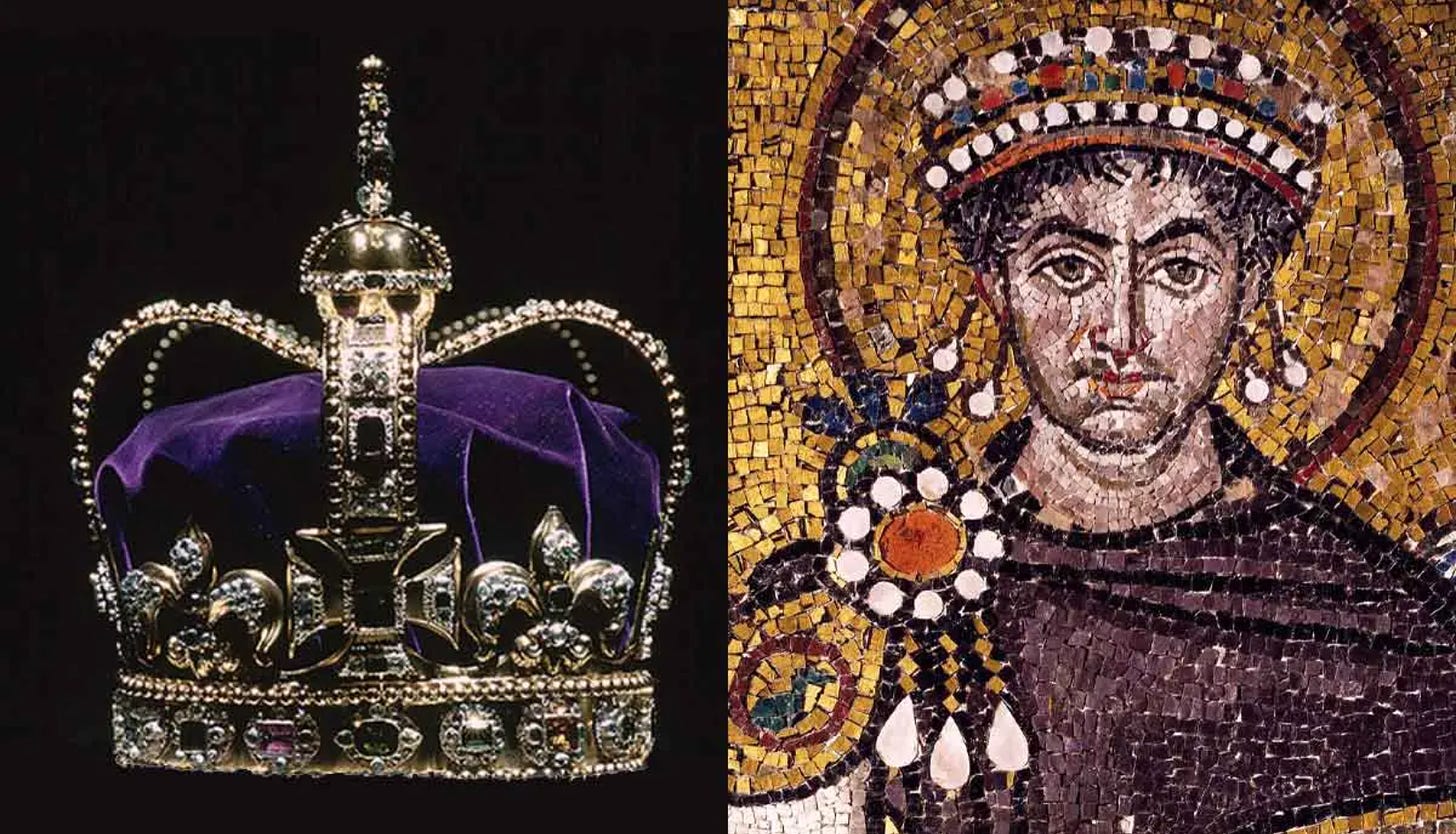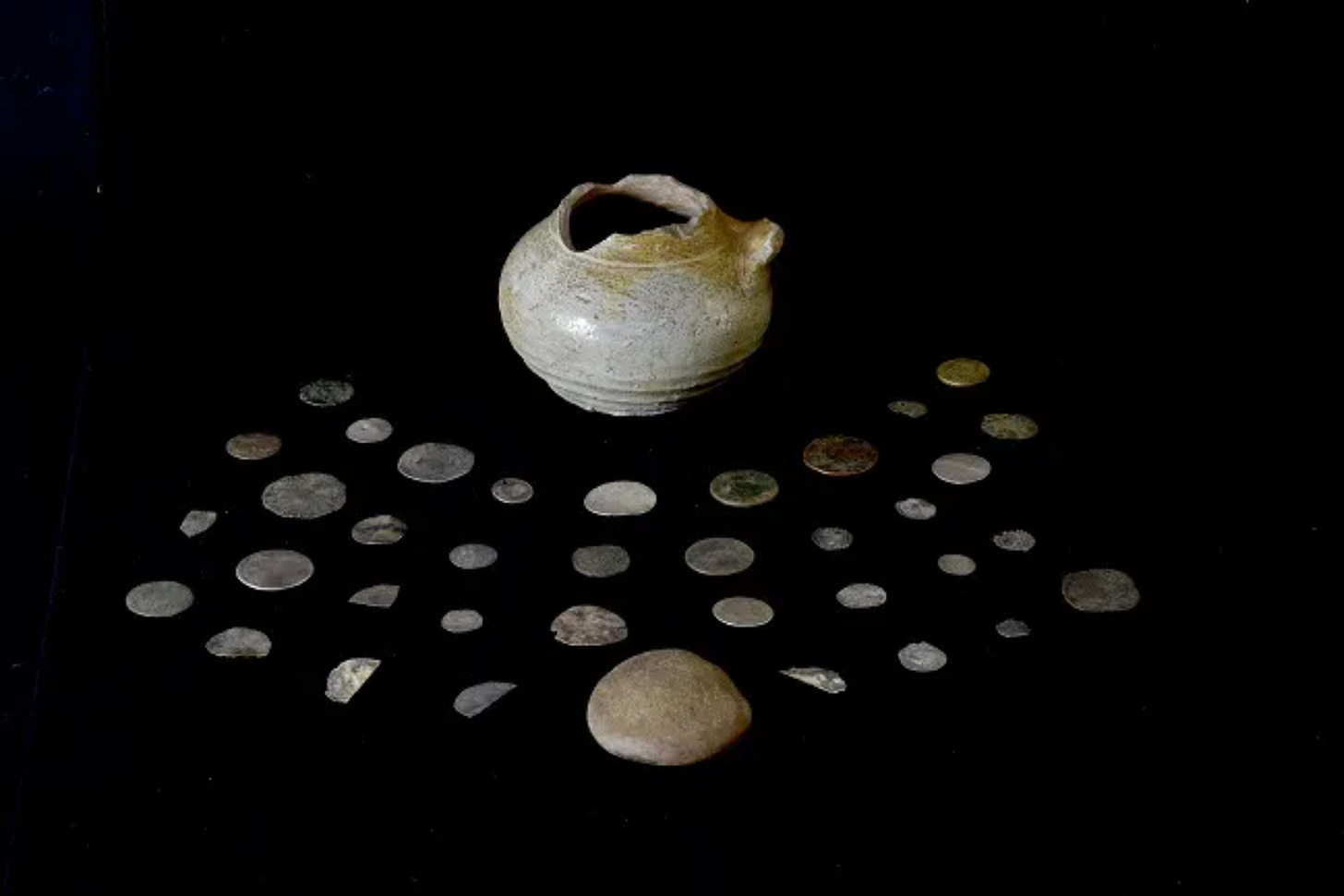Hi everyone,
This week’s history in the news is going to be a bit of a short one because I’m in Arkansas for my cousin’s wedding.
A little update! Last week I asked how long you all prefer for these round-ups to be aaaand… it was split perfectly down the middle. A three-way tie. This is incredibly funny to me.
So I guess some will be short and some will be long and some will be medium-sized. As I’ve been doing it all along, really. Here we go!
This week, in history acting unruly…
Big news out of the Vesuvius Project, the attempt to virtually “unroll” an ancient papyri library dug out of Pompeii! The first word has been decoded: ΠΟΡΦΥΡΑϹ (porphyras) meaning ‘purple cloth’ or ‘cloths of purple.’ Considering that a single pound of purple dye cost roughly half an ancient Roman soldier's annual salary, this is very intriguing. Historically purple is often remembered as the dye for kings.

The English Imperial State Crown and Byzantine Emperor Justinian have wearing the expensive color purple in common. Source. Want to hear about this sort of news earlier? Follow me on Notes.
It’s Halloween season, so I am legally obligated to post at least one Halloween story: Why are there so many cryptids and ghosts haunting Appalachia? It probably has something to do with the fact that the landscape is one of the oldest places in the solar system. (Not an exaggeration, the rocks forming the Appalachian mountains were raised before Saturn’s Rings formed. The same mountain range forms the Scottish Highlands, where there are also numerous tales of ghosts and cryptids wandering about.)
At St. George’s Guildhall in King’s Lynn, the United Kingdom’s oldest working theater, recent renovations have discovered a layer of flooring that the Bard himself may have once tread. The oak boards are held together with wooden pegs instead of nails, which helps date them to the fifteenth century, likely between 1417 and 1430. Shakespeare performed at the Guildhall in the late 16th century, so it’s possible this is the very stage he walked.
These 300-year-old coins found buried in a fireplace might be related to the Glencoe Massacre. Alasdair “Maclain” MacDonald, chief of the MacDonald clan between 1646 and 1692, traveled Europe in his youth; “some of the coins may be personal souvenirs from his early life, according to the researchers.”

36 coins were discovered hidden in this pot. Source: Gareth Beale. Footprints recently found at White Sands National Park have been definitively proven as being at least 21,000 years old, moving back the arrival of humans in North America by 8,000 years! Who were these people that got here before the Clovis? We don’t know.
A “battered” Roman skull with physical trauma and signs of a brain tumor has been discovered in Spain. From the study’s authors, this is interesting because “it offers a window onto the health of past populations, and raises fundamental questions for us about the ability of individuals to survive these conditions, and their quality of life thereafter.”
New 3D scans of Denmark’s famous Jelling Stone have revealed the carver’s name and have implied that a Viking queen was more powerful than we thought. They praise her as the “strength” and “salvation” of Denmark. This lends more power to my episode about Viking warrior women from earlier this very week!
Speaking of Vikings, an “exceedingly rare” horse bridle dating to the Viking Age was discovered in Norway.
Holding a grudge is not the worst thing that you can do. In fact, if you’re a scientist, it might lead to a Nobel Prize winning discovery! Here’s how Hungarian chemist George de Hevesy nursed a grudge about fresh food into his discovery of radioactive tracers.
What do you know about the Nizari Ismailis (besides the fact that they inspired the Order of Assassins in Assassin’s Creed)?

Like many ancient statues, the Parthenon marbles were once painted brilliant colors with intricate designs. In fact, “a close examination of the sculptures showed that carvers took great care to mimic the textures they were trying to depict, such as skin, wool or linen.” Pretty cool.
Who are the people of the North Sentinel Islands? And why are Christian missionaries so obsessed with them they’re willing to die to try to get to them?
A rare Georgian cold bath has been recovered underneath Bath’s Assembly Rooms. It was apparently filled in with rubble after the bombings in WWII and built on top of it.






